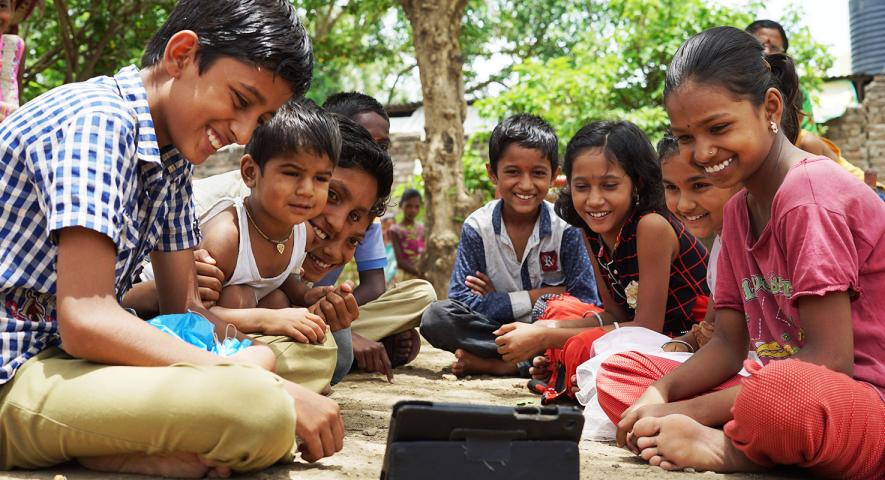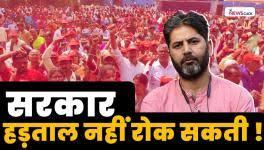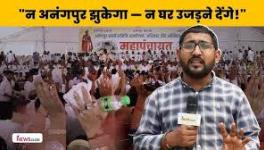Programmes for Change

Representational image. | Image courtesy Pratham
The context: The current economic and social scene
The Indian economy and society are, at present, in a Trishanku state. The GDP, in real terms, is around six per cent in its annual growth rate. This is unlikely to decline very much further, say below four per cent – since the top 10 per cent of income recipients in the country show a good increase in their income regularly. Their demand will help the economy register some positive growth. But the remaining 90 per cent of the income recipients have been registering a decline in their average income in recent years. And there is nothing in the policies of the Union and State governments that promises an increase in the real income of this overwhelming bulk of the Indian population. So the overall growth rate, though positive, is unlikely to register increase. The growing disparity in income distribution in India will mean very low growth, if not stagnation, of the economy.
The social scene is depressing. The total population is likely to increase till the middle of this century. The working age population will continue to grow till then. But in both education and health, the present policy trend is to leave the provision for these, for the lowest level onwards, to private enterprise, to be purchased by individual households. Since incomes do not rise, the expenditures of the vast body of Indians will not be able to promote growth. Poor education and dependence on private health service will result in lack of skills and enterprise. Such an economy cannot hold out the possibility of significantly increased economic investment.
The best we can imagine for ourselves is a re-emergence of the Middle Ages in terms of comparative economy and social attitudes. The traditional Indian society will be ‘content’ with its caste divisions while worshipping in newer Ram Mandirs. The religious minorities will be economically poor because of poor education and health, and will therefore remain subdued as second-class citizens; while the bulk of Hindu society will not much better off economically. The state will see to it that this social equilibrium is not upset.
How do we go about changing this scenario? I suggest we advocate programmes that will work toward
- people being at least school educated;
- easy, inexpensive access to treatment of routine health problems;
- employment that provides reasonable income growing over time, and the improvement of skills;
- small and not-so-small investment opportunities; and
- villages and towns well connected by roads, with electricity and broadband telecom service.
Programmes for change
Education: Access, Teachers, Language, Curriculum
Every village, however small, should have a school.
The teachers should, ideally,
- be locally recruited;
- be strengthened with the help of children in the higher classes;
- be from the same district in non-tribal schools, and speak the same language as the children in tribal schools;
- be trained during summer vacations;
- be able to teach arithmetic, language, history and geography in the children’s language, using the prescribed texts; and
- help SC and ST students who have no access to private tuition, in exchange for an allowance from funds available with the SC and ST development departments of the government.
Children should, ideally,
- be provided free education throughout their school years;
- be taught first in their mother tongue, then introduced to the regional language by the third and fourth standard;
- be taught in the regional language in high school;
- be taught English from the fifth standard onward, and of a standard so as to enable free reading and translating into the regional language, rather than enforced speaking or even writing in English;
- be prepared, at a higher level, for the use of English in college classrooms, with admission to college and government jobs subject to ability to translate from English to the regional language;
- be provided with free study material, including text and non-text books, slates, pencils, exercise books, pens and geometry boxes;
- be provided with midday meals and two sets of uniforms;
- be provided access to high schools, with bicycles if a commute is involved;
- be in schools with electricity and internet;
- be allowed to study in the school premises beyond school hours;
The syllabus, courses and reading material should
- avoid presenting values upholding caste and any particular religion;
- should provide more opportunities for vocational training through well-equipped ITIs as an alternative to higher secondary school;
- introduce undergraduate training programmes in laboratory work in chemical and biological disciplines;
- provide tuition free higher education to SC and ST students;
Health Services:
Cost remains the main consideration for most people when it comes to health service. It is absolutely necessary for the state to provide these services. State health services should start at the Primary Health Centre (PHC), one for a population of 3000.
The PHC should
- have a doctor available within walking distance, and able to manage two adjacent centres;
- ensure adequate number of doctors for PHCs by opening new medical colleges, and opening up the old LMP or LCPS courses; linking the MBBS degree with service in a PHC; and recruiting retired private and government service doctors;
- have two full time nurses and also Asha workers;
- provide free drugs for routine troubles; and
- have two adequately furnished rooms for normal child delivery.
Every Block Hospital located at the Block headquarters should
- be a full-fledged Hospital with 200 beds with competent medical staff; and
- have pathological and radiological service facilities.
At the district headquarters level, there should
- be a hospital with 500 beds with medical service facilities; and
- be a training centre for nurses.
Roads:
In most states, villages are not connected by all-weather roads to the nearest highways. The Maharashtra Regional Imbalance Committee (1983) suggested a formula to provide infrastructure rather than leaving the task to the discretion of the administrative authority. The method suggested was
- calculate the average proportion of the state’s villages with the particular facility;
- provide funds to administrative Blocks (or taluks) with a lower percentage of villages with the facility;
- then recalculate the state average; and
- follow the same allocation procedure till all villages are covered.
Universal Electrification:
Providing electricity to every household, rural and urban, has been accepted as state policy for a long time in India. But it has not happened. What is the way forward?
The distribution work, in a Block or sub-division, can be taken over by private producer companies; the shareholders would be the workers in the distribution company now being disbanded. These companies should be separate producer companies under section 25 of the Companies Act, which are practically producer co-operatives. All workers in the company will be the owners of the shares of this company; when a shareholder ceases to be a worker, his share is to be returned to him, and a new worker would become a shareholder. This workers’ company, from the Engineer to the lowest level worker, will be responsible for the management of the company. In such a company there will be much less chance of theft of power. And, better earning will mean greater effort to expand power supply.
Renting of Public Land Space:
Despite electricity and an all-weather road in a village, lack of accommodation can hinder opening small-scale non-farm enterprises. The data in the entire upland region of India show that in all villages in this vast region, there are at least four hectares of ‘unculturable waste land.’ If these state-owned lands are transferred to the Village Panchayat, the land can be prepared to accommodate small scale processing units, with the condition that only men and women from the village be employed in the units. The land is not to be sold, but rented to the intending party. The land can be leased to process farm products, school uniforms, products from hides etc. The period for renting outland space should not exceed 25 or 30 years.
Communication:
The recent pandemic has shown the usefulness of mobile phones in rural areas, not only medical service, but more so for education and news. But the service depends on towers to facilitate wireless connection, and this is left almost entirely to private enterprise. This is a field where monopoly is the most harmful, because its uses are far reaching and open to small, medium as well as large service providers in a wide variety of fields. This infrastructure is best provided by the state, which will operate in wide public interest. For cross country conveyance, the lines by the side of the rail track are the best. Every state government can/should have state companies to lay such lines along state and district highways and into the villages along village approach roads. The municipalities and corporations should lay such lines in the towns and cities to be rented by various service providers. This is the best way to provide the service at competitive price.
Land Reform:
The regulation of tenancy and land holding was one of the first tasks taken up after independence. There was a ceiling on cultivated land holding; tenancy in cultivated land was regulated. The ceiling on the rent of agricultural land was fixed, and tenants could not be dispossessed at will. In some states, where this law was found to be inadequate, ownership of tenanted land was, by law, transferred to the tenant. New tenants, created after this law, were permitted to purchase the land from the landowner at a price fixed by law, after eleven months.
Today, tenancy in agricultural land continues in states that did not pass a land-to-the-tiller law. But the extent of tenancy is less. Rents are lower. The area under cultivation has declined, particularly in the upland region of peninsular India. This has happened because medium and small cultivators, with up-lands under cultivation, find it unrewarding to cultivate such lands, with rather low yields under rain-fed conditions, and find it too expensive to cultivate such lands with hired labour. Two things help such households to keep such land fallow: the younger male workers of the family migrate to urban areas for work and send money home; and free rice, five kilos per head, reduces the need for putting such land under crop. The landless do not want to rent such lands for cultivation.
The approach to tenancy law needs to be changed in such a situation. How?
- Give up the legal provision of purchase of the tenanted land by the tenant within a year. Instead, allow renting for a period of five years at a time, renewable on mutual consent.
- In certain situations, unirrigated lands may be put to non-agricultural use on a rental basis.
- In the case of other farm lands, the present position in law, permitting tenants to purchase the tenanted land within a year of renting, should be changed. The tenancy period should be five years at a stretch for all types of farm land, and the rental fixed by law. Landowners can rent out land through the village panchayat, but not for more than 25 years.
Decentralisation:
Decentralisation at the state level is very poor today. Following the 92nd Constitutional amendment, the provision of elected bodies at the district and lower levels has been carried out everywhere. But the devolution of the 27 listed state functions to district bodies has been carried out in only one state. Such devolution is essential to work for local development; to learn how to allocate public funds and decide on priorities democratically; and to open up opportunities for local-level political workers.
This is a summary of a full essay, published in two parts in Newsclick, here and here.
Nilakantha Rath, co-author with V.M. Dandekar of the pathbreaking Poverty in India (1971) was formerly Professor and Director, Gokhale Institute of Politics and Economics, and is, at present, Emeritus Fellow in the Indian School of Political Economy, Pune.
Get the latest reports & analysis with people's perspective on Protests, movements & deep analytical videos, discussions of the current affairs in your Telegram app. Subscribe to NewsClick's Telegram channel & get Real-Time updates on stories, as they get published on our website.























